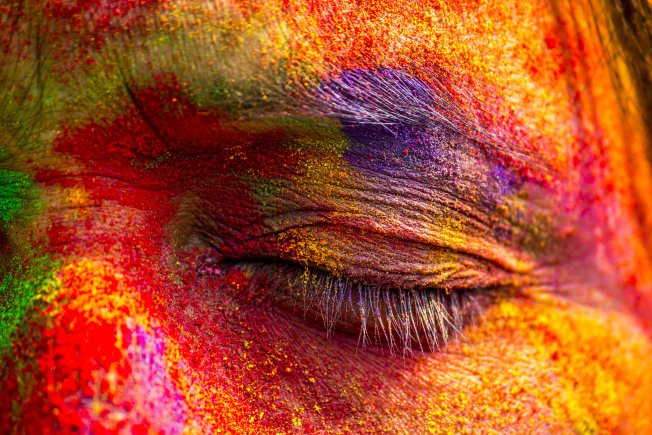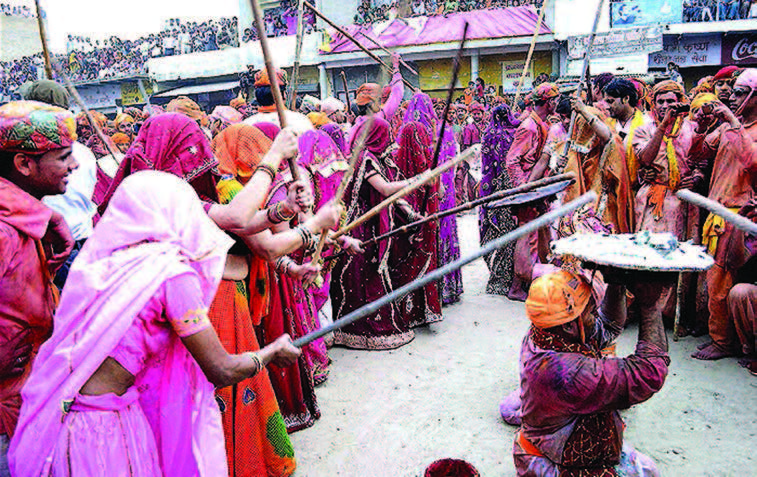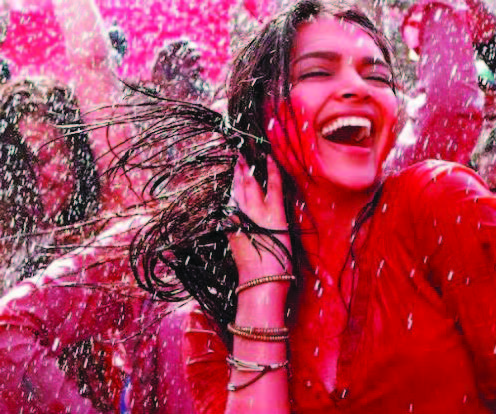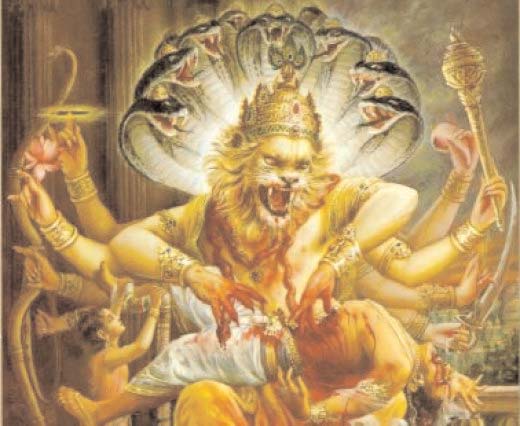
The colorful festival of Holi is celebrated on Phalgun Purnima which comes in February end or early March. Holi festival has an ancient origin and celebrates the triumph of ‘good’ over ‘bad’. The colorful festival bridges the social gap and renew sweet relationships.
On this day, people hug and wish each other ‘Happy Holi’. Holi celebration begins with lighting up of bonfire on the Holi eve. Numerous legends & stories associated with Holi celebration makes the festival more exuberant and vivid. People rub ‘gulal’ and ‘abeer’ on each others’ faces and cheer up saying, “bura na maano Holi hai”.
Holi also gives a wonderful chance to send blessings and love to dear ones wrapped in a special Holi gifts.

LATHMAAR HOLI OF BARSANA
In what is known as the hub of holi in India – Barsana, Holi is known as Lathmaar Holi. Sounds violence?? There is more violece than the name signals off. The stick is in the hands of the women on this day and the men need to work a lot to save themselves from the immensely charged up womenfolk.
The birth place of Lord Krishna’s beloved Radha, Barsana celebrates Holi with extreme enthusiasm as Krishna was famous for playing pranks on Radha and gopis. In fact, it was Krishna who started the tradition of colours by first applying colour on Radha’s face.
Womenfolk, of Barsana it seems, after thousands of centuries want to take a sweet revenge of that prank of Krishna. Even men have not left their mischief and are still eager to apply colour on the women of Barsana.
Following the tradition, men of Nandgaon, the birthplace of Krishna, come to play Holi with the girls of Barsana, but instead of colours they are greeted with sticks.
Completely aware of what welcome awaits them in Barsana, men come fully padded and try their best to escape from the spirited women. Men are not supposed to retaliate on the day. The unlucky ones are forcefully led away and get a good thrashing from the women. Further, they are made to wear a female attire and dance in public. All in the spirit of Holi.
The next day, it is the turn of men of Barsana. They reciprocate by invading Nandgaon and drench the womenfolk of Nandgaon in colours of kesudo, naturally occurring orange-red dye and palash. This day, women of Nadagow beat the invaders from Barsana. It is a colourful site.
The Legend of Holika and Prahlad
There was once a demon king by the name of Hiranyakashyap who won over the kingdom of earth. He was so egoistic that he commanded everybody in his kingdom to worship only him. But to his great disappointment, his son, Prahlad became an ardent devotee of Lord Naarayana and refused to worship his father.
Hiranyakashyap tried several ways to kill his son Prahlad but Lord Vishnu saved him every time. Finally, he asked his sister, Holika to enter a blazing fire with Prahlad in her lap. For, Hiranyakashyap knew that Holika had a boon, whereby, she could enter the fire unscathed.
Treacherously, Holika coaxed young Prahlad to sit in her lap and she herself took her seat in a blazing fire. The legend has it that Holika had to pay the price of her sinister desire by her life. Holika was not aware that the boon worked only when she entered the fire alone.
Prahlad, who kept chanting the name of Lord Naarayana all this while, came out unharmed, as the lord blessed him for his extreme devotion.
Thus, Holi derives its name from Holika. And, is celebrated as a festival of victory of good over evil.
Holi is also celebrated as the triumph of a devotee. As the legend depicts that anybody, howsoever strong, cannot harm a true devotee. And, those who dare torture a true devotee of god shall be reduced to ashes.
Celebrations
Even today, people enact the scene of ‘Holika’s burning to ashes’ every year to mark the victory of good over evil.
In several states of India, specially in the north, effigies of Holika are burnt in the huge bonfires that are lit. There is even a practice of hurling cow dungs into the fire and shouting obscenities at it as if at Holika. Then everywhere one hears shouts of ‘Holi-hai! Holi-hai!’.
The tradition of burning ‘Holika’ is religiously followed in Gujarat and Orissa also. Here, people render their gratitude to Agni, the god of fire by offering gram and stalks from the harvest with all humility.
Further, on the last day of Holi, people take a little fire from the bonfire to their homes. It is believed that by following this custom their homes will be rendered pure and their bodies will be free from disease.
At several places there is also a tradition of cleaning homes, removing all dirty articles from around the house and burning them. Disease-breeding bacteria are thereby destroyed and the sanitary condition of the locality is improved.
The Legend of Radha-Krishna
Young Krishna is known to be very playful and mischievous. The story goes that as a child, Krishna was extremely jealous of Radha’s fair complexion since he himself was very dark.
One day, Krishna complained to his mother Yashoda about the injustice of nature which made Radha so fair and he so dark. To pacify the crying young Krishna, the doting mother asked him to go and colour Radha’s face in whichever colour he wanted.
In a mischievous mood, naughty Krishna heeded the advice of mother Yashoda and applied colour on her beloved Radha’s face; Making her one like himself.
Well, there is also a legend to explain Krishna’s dark complexion. It so happened that once a demon attempted to kill infant Krishna by giving him poisoned milk. Because of which Krishna turned blue. But Krishna did not die and the demon shriveled up into ashes.
The beautiful scene of Krishna’s prank in which he played colour with Radha and other gopis has been made alive in myriad forms in a number of paintings and murals.
Celebrations
Somehow, the lovable prank of Krishna where he applied colour on Radha and other gopis using water jets called pichkaris gained acceptance and popularity. So much so that it evolved as a tradition and later, a full-fledged festival.
Till date, use of colours and pichkaris is rampant in Holi. Lovers long to apply colour on their beloveds face and express their affection for each other.
This legend is wonderfully brought alive each year all over India, particularly in Mathura, Vrindavan, Barsana and Nandgaon-the places associated with Krishna and Radha.
In fact, the entire country gets drenched in the colour waters when it is time for Holi and celebrate the immortal love of Krishna and Radha.
In some states of India, there is also a tradition to place the idols of Radha and Krishna in a decorated palanquin, which is then carried along the main streets of the city. All this while, devotees chant Krishna’s name, sing devotional hymns and dance in the name of the lord.
The Legend of Dhundhi
It is believed that there was once an Ogress called Dhundhi in the kingdom of Prithu (or Raghu). The female monster used to specially trouble little children who became fed- up of her.
Dhundhi, had a boon from Lord Shiva that she would not be killed by gods, men nor suffer from arms nor from heat, cold or rain. These boons which made her almost invincible but she also had a weak point. She was also cursed by Lord Shiva that she would be in danger from boys going about crazy.
Deeply troubled by the Ogress, the King of Raghu consulted his priest. Giving the solution, the priest said that on Phalguna 15, the season of cold vanishes and summer starts. Boys with bits of wood in their hands may go out of their house, collect a heap of wood and grass, set it on fire with mantras, clap their hands, go around the fire thrice, laugh, sing and by their noise, laughter and homa, the ogress would die.
The legend has it that on the day of Holi, village boys displayed their united might and chased Dhundhi away by a blitzkrieg of shouts, abuses and pranks.
It is for this reason that young boys are allowed to use rude words on the day of Holi without anybody taking offence. Children also take great pleasure in burning Holika.





Be the first to comment